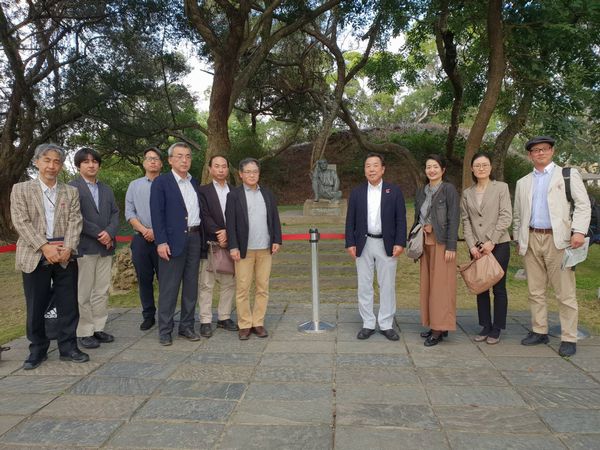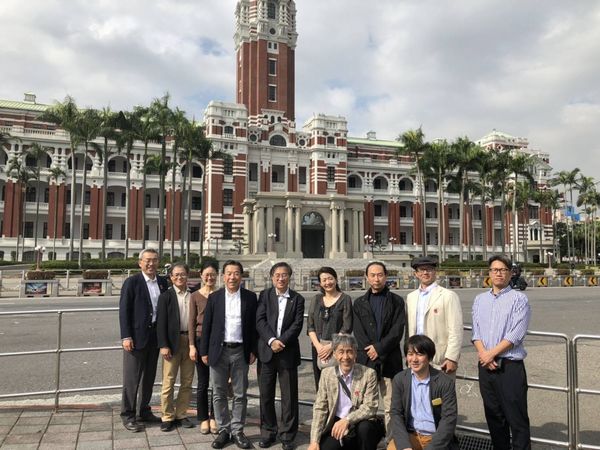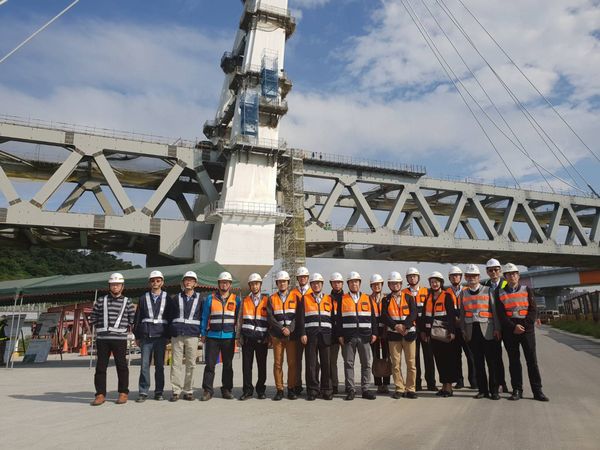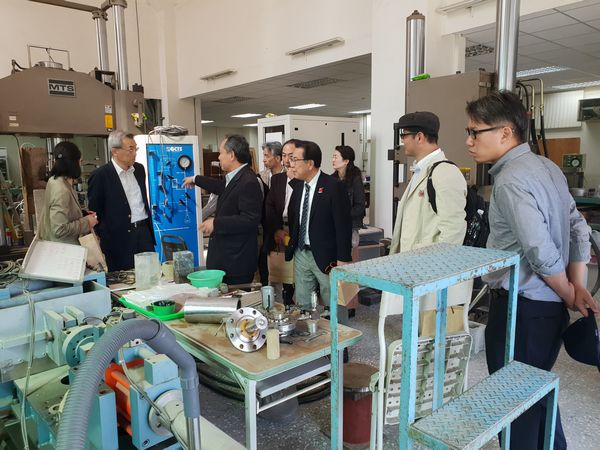IAC News
IAC News No.94, August 2020
Japan Society of Civil Engineers International Activities Center August 3, 2020 IAC News No.94
Pandemic Year 2020: The Role of Infrastructure and Civil Engineering

Hitoshi Ieda
108th JSCE President
What role will 2020 take? For us, who have taken all possible measures against the COVID-19 pandemic, it is extremely difficult to draw any conclusions at this point in time. Nonetheless, 2020 will no doubt be remembered vividly in our minds.
With more than 12 million people infected and 550,000 fatalities across the globe at this point in time, COVID-19 has left a tremendous number of human casualties and enormous economic damage in its wake as well as having divided the global economy. In Japan, we must not allow a second and third wave of the pandemic. The travelling of people to and from overseas remains suspended. There are still many unknown factors, leaving behind various issues in terms of how to tackle them.
On the other hand, compared to the era of the Spanish influenza pandemic about 100 years ago, we now not only have medical knowledge and medical systems, but developed countries have notably put into place various social infrastructures such as reliable advanced water and sewerage systems as well as power, communication, and transportation systems. It is also an obvious fact that their presence has, to a certain extent, kept the spread of the infection at bay and maintained the necessary standard of living and urban functions, albeit somewhat inconvenient. The thought of no reliable water supply or sewerage system or a large-scale power outage due to a natural disaster sends shivers down my spine. If a distribution system supported by a solid transportation system had not been established, the “stay home” movement would not have lasted. The benefits of various infrastructures, including intangible aspects, are enormous.
I would now like to emphasize once again the significance of “prevention” in the field of civil engineering. From the latter half of the 19th century to the first half of the 20th century, Baron Shinpei Goto, who demonstrated great leadership in regards to the government’s overall infrastructure policy, originally set the Ministry of Home Affairs as the starting point for administrative and political activities. Furthermore, Dr. Tetsu Nakamura, who long devoted to medical activities in the war-torn land of Peshawar near the border of Afghanistan and unfortunately fell victim to a terrorist attack in 2019, advocated that “one irrigation canal will do more good than 100 clinics” in order to eliminate malnutrition and poor hygiene, which are potential causes of disease. Acting on his own initiative, Dr. Nakamura made a large irrigation canal in Peshawar a reality. “Prevention” has been one of the core themes of safety in the infrastructure field since ancient times along with “disaster mitigation” and “accident prevention.” We are well aware that our urgent and important role in this present situation is to protect the citizens of the world, including people of developing countries, from infectious diseases and any disasters that occur as a result of such diseases.
As people refrained from going outside, we Japanese had the opportunity to reflect on the implicit ideas and social systems of Japanese society and the various infrastructures that we are unconsciously surrounded by. First and foremost, the significance of the traffic of people and communication, and the importance of increasing “solidarity” among people and avoiding social division were strongly observed. I think that we have by and large shared how lifestyles, work styles, and the social systems that support them should be transformed in the future.
On the other hand, although Japan has been called a “manufacturing powerhouse” up to now, it has become apparent that there is considerable room for improvement in the production capacity of necessary goods and its supply chains. In addition, the COVID-19 pandemic has made us aware that the digitization of our social systems, including information and communication infrastructures at the administrative and household levels, is extremely immature, and as typified by the confusion caused by fake news, there is a potential vulnerability within our information society, as well as risks that lurk in our global economy that brings great benefits in normal circumstances. However, in such circumstances, in major metropolitan areas, thoroughly pushing ahead with initiatives such as working remotely, I got a sense of the potential this has to significantly reduce the excessive congestion of urban railways and roads, which has been a major problem until now. Furthermore, at the policy level of the Japanese government, the COVID-19 pandemic has reaffirmed the problems brought about by the concentration of the population and functions in major metropolitan areas, especially Tokyo, and the need for regional development.
Now that the world has experienced the COVID-19 pandemic, shouldn’t we actively pursue a paradigm shift of both tangible and intangible elements toward the restructuring of our philosophies and systems in a post-pandemic society, rather than simply aiming for a return to as things were before?
Unfortunately, 2020 is also the year of the Tokyo Olympic and Paralympic Games, which had to be postponed for a year. To make this festival of sport a success, we had prepared various Travel Demand Management measures to disperse traffic during the event. However, next year's Games will require the implementation of far more thorough hygiene measures than the previous Games and the thorough enhancement of managing the flow of both people and traffic.
The last Tokyo Games, which was held in 1964, was the start of modern infrastructure development in Japan, including the likes of highways and Shinkansen trains. Since then, various infrastructures that lagged behind have been constructed with great speed. Over half a century has passed since the 1964 Tokyo Games, and during that time, the social environment, international environment, technological environment, and Japan's position in many ways has changed dramatically. From that perspective, I think that the 2020 Olympic and Paralympic Games, the second time the event will be held in Tokyo, will be another time for infrastructure to make a new start to meet the new needs of our society.
It is feared that the COVID-19 pandemic will bring with it enormous social and economic repercussions equivalent to those of the 1929 Great Depression. Thus, each country is in a situation in which it requires strong economic measures. As part of this, public works will no doubt also have a role to play. When the time comes, there are many businesses that need to be urgently maintained, such as by strengthening measures against severe disasters that have occurred frequently in recent years. Furthermore, in order for the overall infrastructure to continue to function in a sound manner and continue to support the well-being and prosperity of society, it is essential to reliably maintain and renew aging infrastructure based on the thinking of “preventive maintenance” and “improved maintenance.” However, surely more important than this is going beyond horizontal deployment of conventional infrastructures to advance “vertical deployment” by overcoming existing institutional restrictions and making full use of new technologies to promote the evolution and transformation of infrastructure in the post-pandemic era both in terms of tangible and intangible elements.
Construction Management Committee

Masahide Horita
(Chair of the Construction Management Committee)
1. Overview
The Construction Management Committee was established in 1985, when it separated from the Construction Information Systems Sub-Committee of the Committee of Infrastructure Planning and Management. Recently, the Committee met for the 100th time in June this year. Members of the committee come from a variety of backgrounds and affiliations, including the public sector, the private sector and academia. Traditionally we have been working on those major topics of construction management, such as infrastructure development, management systems, public procurement, public policy, the construction markets, industrial policies, corporate management and human resources. More recent topics include i-Construction and overseas expansion of the Japanese infrastructure systems. Our primary aims lie in constant reforms of the project delivery methods and industrial regulations in view of rapid demographic, geographic, and socio-economic changes that we are facing.
2. Organization of the Committee
The committee as of July, 2020 consists of 48 members and 8 advisors, with 5 permanent sub-committees (O&M, Journal Editorial, Awards, International Collaboration, Contract Guides Enactment), 4 special sub-committees (Contract Guides Planning, Case Method, i-Construction, Post-Pandemic), and 15 research sub-committees (see Table 1).
Table 1 Research Sub-Committees
| Category1 | PFI/PPP, Price Mechanism in Public Works |
| Category2 | Cost Control, Area Management, Natural Disaster Mitigation, Local Governance and Disaster Management, Civic Design Competition, Asset Management Systems |
| Category3 | Pragmatic i-Construction, Management Capacity Development, Strategic Construction Management in Hokkaido, Pragmatic Construction Management Contracts, Construction Sites, Sustainable Infrastructure Projects, Productivity and Innovation in the Construction Industry |
3. Main Events
We host a range of events for disseminating academic, technological and practical works that have come out of our research activities as shown below. Your participation would be greatly appreciated.
(1) Construction Management Awards, including Best Paper, Best Young Science Paper, Best Practice, and Good Presentations
(2) Annual Seminars, presentations from the research sub-committees
(3) Public Procurement Symposium, disseminating good practices on public procurement
(4) Regional Symposium on Construction Management, introducing regionally specific issues and efforts in each geographical region
(5) Academic Conference on Construction Management, presentations from the authors of refereed and non-refereed papers

Symposium on Civi Engineers Interviews
【Reported by Masahide Horita, Chair of the Construction Management Committee】
~ Taiwan Section ~
JSCE Kansai Chapter Visits Taiwan

Assoc. Prof. Wu-Te Ko (Secretary General, Taiwan Section))
The JSCE Taiwan Section has held a joint conference with the Seibu Chapter and the Korean Section once every two years since 2012. Although the cultural exchange between the Chapters and the Sections continues, I was thinking that I would like to expand cultural exchanges to other chapters and sections. Around that time, because my former advisor, Professor Harushige Kusumi (a professor at Kansai University and a former President of Kansai University) was the director of the Kansai Chapter in 2019, I heard that the Kansai Chapter wanted to visit the Taiwan Section by forming a group, and I was delighted to accept.
The “Kansai Chapter Team” consisting of 10 people from industry, government, and academia, headed by Professor Kusumi, the director of the Kansai Chapter visited Taiwan during December 8‐10, 2019.
On December 8, the Team touched down in Kaohsiung, visited Cheng Shiu University, which is where I work, and met with Rector Jui-Chang Kung. At the National Cheng Kung University in Tainan City in the following morning, the Team met Professor Jian-Hong Wu, the current presidnet of Taiwan Section, and Professor Der-Her Lee, a former Taiwan Section president and then made a visit to the Wushantou Dam Facility, a designated JSCE Civil Engineering Heritage site. The Wushantou Dam Facility was the largest dam in Asia when it was completed in 1930 with its design and construction overseen by Yoichi Hatta (from Kanazawa City, Ishikawa Prefecture). It is also known for transforming the Chia-Nan plain into a major grain-producing region due to the development of irrigation systems that came about from the construction of the Wushantou Dam Facility. The dam is still functioning just as it was back in the day. The Chia-Nan Irrigation Association currently manages the dam. After the tour, the Team travelled to Taipei on the Taiwan High Speed Rail and later that night participated in a social gathering with a Japanese construction company stationed in Taiwan. At the social gathering, employees stationed in Taiwan gave a talk on the “differences in construction between Taiwan and Japan” before participants exchanged their opinions on the subject. On the final day of the trip, the Team visited a monorail bridge construction in New Taipei City (formerly Taipei County adjacent to Taipei City). The bridge is an asymmetric cable-stayed bridge that boasts a total length of 502 meters, tower height of 160 meters, and maximum span length of 225 meters, and is scheduled for completion in December 2021. Local consulting firms and construction companies are carrying out the design and construction of the bridge. The Team finally stopped by the Presidential Office Building (formerly known as the Government-General of Taiwan) before flying home from Taiwan Taoyuan International Airport in the evening.
Although it was a short period of 3 days, it was a very meaningful trip in which the Team visited the Wushantou Dam Facility, the Presidential Office Building, and a monorail bridge construction, as well as exchanged opinions with Taiwan Section members, including Japanese general contractor engineers stationed in Taiwan. If the opportunity presents itself, I would love to build cultural exchanges with other JSCE chapters in the future.

In front of the Statue of Yoichi Hatta

Presidental Office Building

Kansai Chapter, Professor Der-Her Lee and
Taiwan Section Members

Bridge Construction Siten

A Laboratory in the National Cheng Kung University

Visiting the Taiwan Section Secretariat
【Reported by Wu-Te Ko, Secretary General, Taiwan Section】
Updates
-
【Online Conference】 IABSE-JSCE 4th Joint Conference, Advances in Bridge Engineering:
http://www.iabse-bd.org/2020/ -
The 2020 International Conference on Sustainable and Innovative Infrastructure (ICSII 2020)
https://www.icsii.net/ -
ASCE Lifelines Conference 2021
https://samueli.ucla.edu/lifelines2021 -
The Second International Conference on Press-in Engineering (ICPE) 2021, Kochi
https://icpe-ipa.org/ -
jhappy - JICA’s Grant Aid Cooperation -
Facebook: https://www.facebook.com/jhappy20161110/
Twitter: https://twitter.com/jhappy_official -
The International Infrastructure Archives
– A Compilation of Japan’s Greatest Projects in Transfer of Civil Engineering Technology in Service –
http://www.jsce.or.jp/e/archive/ - IAC “News Pick Up!!” on the JSCE Japanese website
http://committees.jsce.or.jp/kokusai/iac_dayori_2020
- Summary of featured articles in JSCE Magazine Vol. 105, No.8, August 2020
http://www.jsce-int.org/pub/magazine
- Journal of JSCE
https://www.jstage.jst.go.jp/browse/journalofjsce
IAC News Subscription
The IAC News is one of the communication tools to share information and ideas with the members. We would like to invite you, your friends and colleagues to join the communication and to subscribe the IAC News. Please register online: (http://www.jsce-int.org/node/150). We look forward to meeting you.
